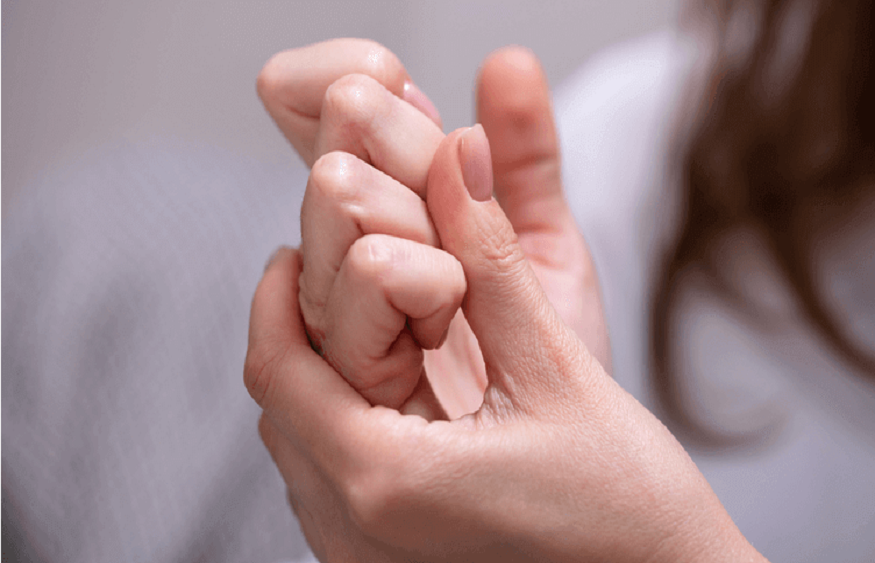The familiar sound of a cracking joint is a sensation many of us have experienced at some point in our lives. Whether it’s a subtle pop during a morning stretch or a more pronounced crack while bending a knee, the question lingers: What does the sound of a cracking joint really mean? In this blog post, we’ll be exploring the mechanics behind this phenomenon, exploring the anatomy of joints, potential causes of joint cracking, and its significance in the context of overall joint health.
Visit a top hospital in Lucknow today if you are facing rheumatoid arthritis symptoms, joint-related aches and agonies.
Understanding the Anatomy of Joints
Before we can decipher the meaning of cracking joints, it’s essential to have a basic understanding of joint anatomy. Joints are the points where two or more bones meet and are crucial for facilitating movement. They are composed of various components, including the bones, cartilage, ligament, tendon, and synovial fluid.
The Cracking Joint: Tendon and Synovial Fluid
The distinctive sound associated with a cracking joint is often attributed to the release of gases, primarily nitrogen, from the synovial fluid that lubricates the joints. This fluid reduces friction between the moving parts of the joint, allowing for smooth and pain-free motion. When pressure changes occur within the joint, such as during movement, these gases can form bubbles, leading to the characteristic cracking sound.
The Tendon Connection
A tendon, which connects muscles to bones, also plays a role in the joint-cracking symphony. As muscles contract and pull on the tendon, the tension can cause the tendon to move slightly out of place and then snap back into position. This snapping motion can contribute to the audible pop or crack that accompanies joint movement.
Common Causes of Cracking Joints
Now that we understand the basics of joint anatomy, let’s explore some common causes of a cracking joint:
Normal Joint Function:
- Contrary to common misconceptions, the sound of a cracking joint is often harmless and can be a result of normal joint function.
- When joints move, the pressure changes within them can lead to the formation and collapse of gas bubbles in the synovial fluid.
Tight Ligament and Tendon:
- A tight ligament and tendon can contribute to joint cracking, especially if they snap over the joint’s bony structures during movement.
- Stretching and flexibility exercises may help alleviate joint tightness and reduce cracking sounds.
Age-Related Changes:
- As we age, the cartilage in our joints may experience wear and tear, potentially altering the joint’s mechanics and increasing the likelihood of cracking sounds.
- Maintaining a healthy lifestyle, including regular exercise and a balanced diet, can support joint health throughout the ageing process.
Medical Conditions:
- In some cases, persistent joint cracking may be associated with underlying medical conditions, such as arthritis.
- Rheumatoid arthritis, a chronic inflammatory disorder, can cause joint inflammation, pain, and deformity. Understanding rheumatoid arthritis symptoms is crucial for early detection and management.
The Link Between Cracking Joints and Arthritis
Arthritis, a broad term encompassing various joint disorders, can be associated with cracking joints. Rheumatoid arthritis, in particular, is an autoimmune disease that primarily affects the joints, causing inflammation, pain, and potential joint damage.
Rheumatoid Arthritis and Joint Cracking:
- Rheumatoid arthritis symptoms may include joint stiffness, swelling, and pain.
- Inflamed joints can produce cracking or popping sounds during movement due to changes in the synovial fluid and the joint’s overall structure.
Early Detection and Management:
- Recognizing rheumatoid arthritis symptoms early is crucial for effective management and prevention of joint damage.
- If you experience persistent joint pain, swelling, or unusual sounds, consult a healthcare professional for a thorough examination and appropriate diagnostic tests.
Maintaining Joint Health and Preventing Cracking
While occasional joint cracking is normal for many people, there are steps you can take to promote overall joint health and potentially reduce cracking sounds:
Stay Active:
- Regular exercising is advantageous as it helps with the upkeep of joint flexibility and strength.
- Engage in low-impact activities like swimming or walking to reduce joint stress.
Maintain a Healthy Weight:
- Excess body weight can strain joints, contributing to wear and tear.
- Adopting a healthy diet and lifestyle can help manage weight and support joint health.
Stay Hydrated:
- Proper hydration helps maintain the optimum viscosity of the synovial fluid.
- Drinking an adequate amount of water can support joint lubrication.
Stretch and Warm-Up:
- Incorporate stretching and warm-up exercises into your routine to prepare your joints for physical activity.
- This can help reduce the likelihood of tight ligaments contributing to joint cracking.
Conclusion
In conclusion, the sound of a cracking joint is a common and usually benign occurrence, often associated with the release of gases within the synovial fluid or the movement of tendons. While occasional cracking is generally harmless, persistent or painful joint cracking may warrant medical attention, especially if it is accompanied by other symptoms.
Understanding the potential causes of joint cracking, including normal joint function, tight ligaments, age-related changes, and underlying medical conditions like rheumatoid arthritis, empowers individuals to take proactive steps towards joint health. By adopting a healthy lifestyle, staying active, and seeking medical advice when needed, we can navigate the symphony of joint sounds and strive for optimal joint function throughout our lives.
A super-speciality hospital in Lucknow can prove to be one of the best options when it comes to the upkeep of orthopaedic and bone health in this day and age.

